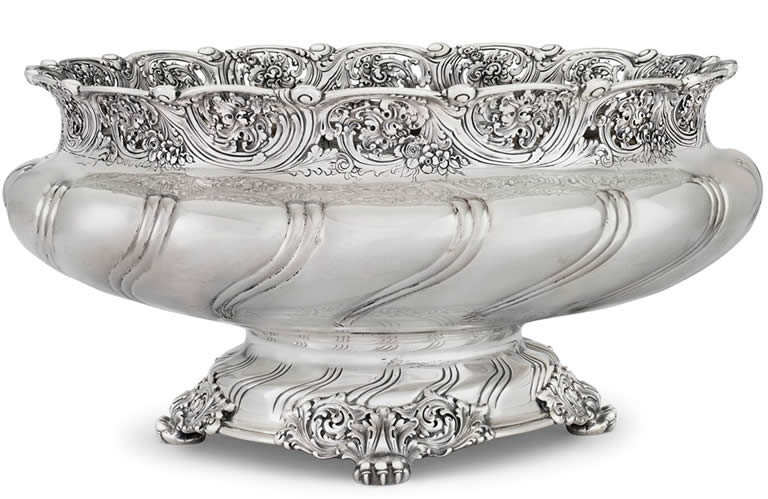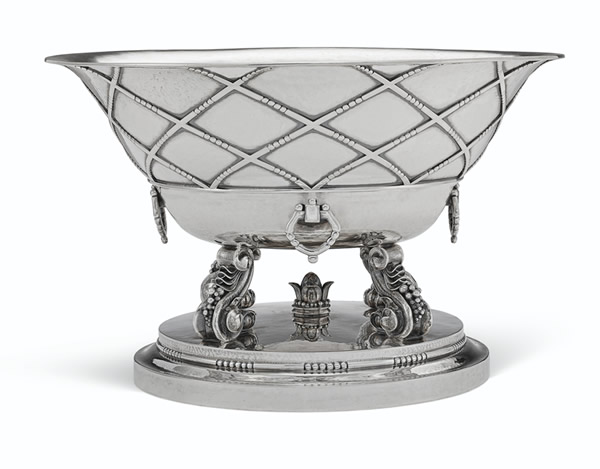Silver Bowl Restoration in London
Reviving Heritage and Charm
Silver bowls are elegant and versatile objects that serve both functional and decorative purposes. Whether used as centerpieces, serving dishes, or heirloom items, silver bowls often hold sentimental and monetary value. Over time, however, these cherished items can lose their luster due to wear, tarnish, and damage. Restoring a silver bowl brings back its original beauty and ensures it remains a treasured possession for years to come.


The Joy of Silver Bowl Restoration
Restoring a silver bowl is a fulfilling endeavor that combines preserving history with enhancing beauty. Whether it’s an heirloom passed down through generations or a prized decorative piece, a restored bowl continues to serve as a testament to craftsmanship and tradition. With proper care, these timeless objects can be cherished and admired for years to come.
Through thoughtful restoration, silver bowls regain their place as shining symbols of elegance and heritage, connecting us to the artistry of the past and the joy of the present.
When to Seek Professional Help
While minor cleaning and polishing can be done at home, certain restoration tasks require professional expertise. Intricate designs, deep dents, or extensive tarnish are best addressed by skilled artisans who have the tools and experience to restore the bowl without compromising its integrity.
Common Issues with Silver Bowls
Silver bowls, like all silver items, are susceptible to various issues, including:
- Tarnishing: Prolonged exposure to air and sulfur-containing substances causes tarnish, which dulls the bowl's shine.
- Scratches and Abrasions: Improper handling or cleaning can lead to surface scratches.
- Dents and Warping: Accidental impacts or mishandling can result in dents or distortions.
- Worn Plating: Over time, the silver plating may wear thin or peel, exposing the underlying material.
- Accumulated Dirt and Grime: Neglected bowls may develop a layer of grime, obscuring their intricate designs and details.
Timely restoration helps address these issues before they worsen, preserving the bowl’s integrity and value.
Why is Silver Bowl Restoration Important?
Restoring silver bowls is vital for several reasons:
- Preservation of Craftsmanship: Many silver bowls feature intricate designs and craftsmanship that deserve to be preserved.
- Aesthetic Appeal: A restored bowl regains its gleaming surface, enhancing its visual and decorative appeal.
- Functional Use: Restored bowls can be safely used for serving or display purposes.
- Sentimental and Historical Value: Heirloom bowls often carry emotional and historical significance that restoration helps maintain.
The Science of Tarnish
Tarnish forms when silver reacts with sulfur compounds in the air, creating a dark layer of silver sulfide on the surface. While this reaction is natural, it detracts from the bowl’s beauty. Restoration involves safely removing tarnish without damaging the silver underneath.
The Process of Silver Bowl Restoration
Restoring a silver bowl requires skill, patience, and the proper tools. The process involves several key steps:
1. Assessment
Begin by examining the bowl for tarnish, scratches, dents, or other damage. This step determines the extent of restoration needed.
2. Cleaning the Surface
Remove surface dirt and oils with a mild soap solution and a soft cloth. Avoid abrasive sponges or harsh chemicals that can scratch or damage the silver.
3. Polishing to Remove Tarnish
Use a high-quality silver polish or a homemade baking soda paste to remove tarnish. Apply the polish with a soft cloth, working gently in circular motions. Pay extra attention to engraved or embossed areas to preserve the bowl’s intricate details.
4. Repairing Dents and Surface Damage
Dents and scratches require professional attention. Techniques such as planishing (a method of reshaping metal with gentle hammering) can restore the bowl’s form. Buffing may also be used to smooth out surface imperfections.
5. Replating (If Necessary)
If the silver plating is severely worn, the bowl may need replating. This involves applying a new layer of silver through electroplating, restoring the bowl’s original shine and uniformity. Replating should be done by professionals to ensure a flawless finish.
Preserving the Restoration
To maintain a restored silver bowl’s brilliance and condition, follow these care tips:
- Regular Cleaning: Gently clean the bowl with a soft, dry cloth after use to prevent dirt and tarnish buildup.
- Proper Storage: Store the bowl in a cool, dry place, away from direct sunlight and humidity. Anti-tarnish strips or cloths can help slow the tarnishing process.
- Handle with Care: Avoid using the bowl for harsh or acidic foods that can damage the silver. Handle it carefully to prevent dents and scratches.
- Avoid Harsh Chemicals: Refrain from using abrasive cleaners or bleach, which can harm the silver surface.
Information for Caring for Silverplate Flatware
1. Hand Wash Only
The normal advice for all plated flatware is to avoid washing it in the dishwasher. Wash your plated silverware by hand, in warm soapy water, with a soft sponge or cloth, then rinse and dry with a dry, clean towel. Don't use harsh chemicals or gritty products. Don't over-scrub or wash too often.
2. Use the Right Soap
Any mild dish soap should do, but make sure to use an acid-free soap or detergent with a neutral pH that is free of phosphates and does not contain lemon or another citric acid, as those ingredients can be overly corrosive.
3. Rinse Quickly
Wash silver-plated flatware as quickly as possible after use. At the very least, rinse to remove food from the items after use and don't let them sit dirty. Acidic foods (egg yolks, brussels sprouts, table salt, olives, salad dressing, vinegar, fruit juices, etc.) can corrode silver if left in contact with it for too long.
4. Dry Carefully
Water is the enemy of silverware. Don't leave your plated ware soaking in water for too long, and make sure to dry it thoroughly with a soft cloth as soon as possible to prevent tarnish.
5. Do NOT Over polish
Surprisingly, silver flatware does not need regular polishing and should not be cleaned or polished more than absolutely necessary. Instead of using a chemical polish, if it looks just a little dull, use a polishing cloth. If you care for and store the silverware properly, you will reduce the build-up of tarnish and the need to use polish. Only use silver polish when absolutely necessary, or you'll rub the silver plate off the silverware.
What About the Knife Blades?
Remember that your flatware knife blades will most likely be stainless steel, and they should be cleaned with that metal in mind.
6. Avoid Abrasives
On the occasions when you do need to polish your silverplate flatware, only use a good quality silver polish or cream, not a standard metal polish, which will be too abrasive. If you need to, use a brush with very soft bristles for crevices. Do not, under any circumstance, use wire wool or abrasive cloth to remove stains; this will scratch and damage the silver. As mentioned, polish as seldom as possible since a small amount of metal will be removed each time.
7. Do Not Use Rubber or Latex Gloves
If you wear gloves, make sure that they are made of cotton because rubber gloves contain sulphur that may promote tarnish. Don't wear rubber or latex gloves, and don't let clean silver touch a rubber drying mat.
8. Store Properly
It is important to store your silver flatware properly to prevent scratching, corrosion, and tarnish. Wrap your flatware in tarnish-resistant flannel cloth, acid-free tissue paper, or undyed cotton or linen, or keep it in a flannel-lined drawer. Since air is the cause of tarnish, make sure to keep it in an airtight container. If you don't use it every day, consider storing it in a zip-top plastic bag (Note: don't use rubber bands and avoid storage boxes or chests with rubber seals.)
Silver Repairs, Restoration & Silver Plating by post
Send us your silver for restoration, repairs or silver plating with ease! Simply click the button below to download our "Send by Post" Repair Form. Complete the form and mail your silver item to us. Once repaired, your item will be returned to you securely via Special Delivery.
Let us handle your silver with the care it deserves, no matter where you are!

